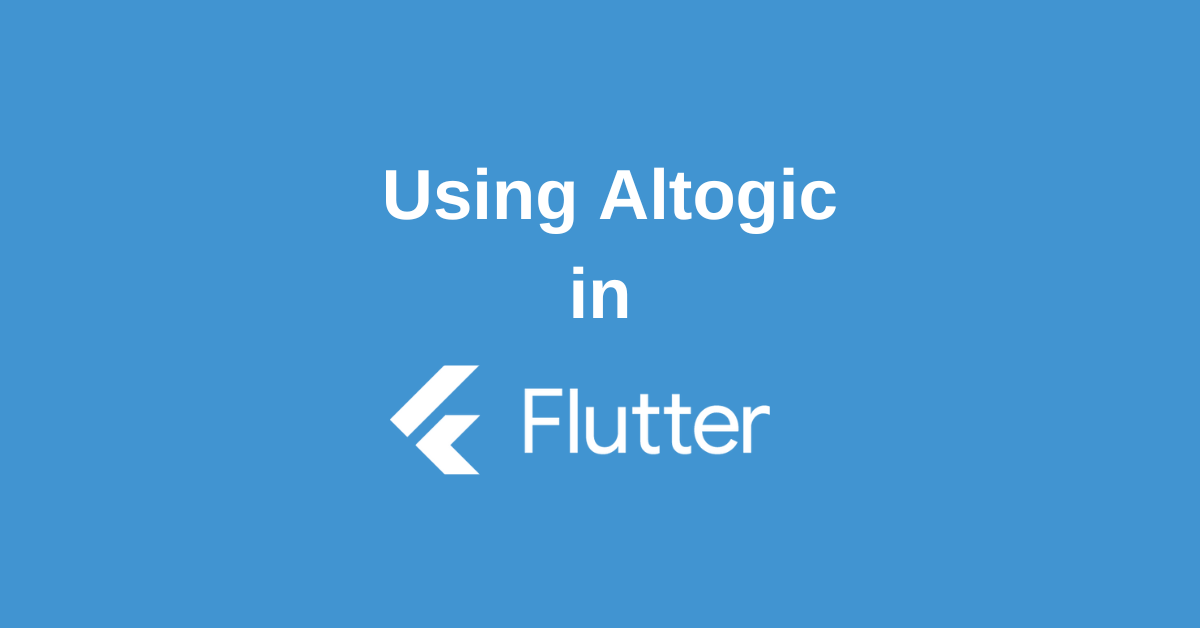In today’s fast-paced app development ecosystem, efficiency and scalability are the keys to building successful digital products. Flutter, Google’s open-source UI toolkit, has gained tremendous popularity because it allows developers to create beautiful, cross-platform apps from a single codebase. Meanwhile, Altogic has emerged as a powerful Backend-as-a-Service (BaaS) platform, providing developers with ready-made backend solutions such as authentication, database management, cloud functions, and APIs. Together, Flutter Altogic integration offers a seamless way to build and scale modern mobile applications quickly, without reinventing the wheel for backend infrastructure.
If you are a mobile developer searching for a reliable backend solution to pair with Flutter, this article will walk you through the possibilities, benefits, and a practical roadmap to integrating Altogic with Flutter.
What is Altogic?
Altogic is a next-generation backend server that empowers developers to focus on the front-end while providing essential backend features such as:
- User authentication and authorization
- Database modeling and management
- Real-time APIs
- Cloud functions for complex logic
- File storage solutions
- Role-based access and security
Instead of building backend code manually, Altogic allows developers to design and deploy backend workflows visually through its low-code interface. This makes it a perfect companion for Flutter developers aiming to ship apps faster
Why Choose Flutter with Altogic
When it comes to application development, most startups and businesses face the challenge of balancing speed with scalability. Flutter handles the UI and cross-platform support beautifully, while Altogic takes care of the backend. Let’s look at some compelling reasons why Flutter Altogic integration is ideal:
- Rapid Time-to-Market: Flutter reduces frontend development time, and Altogic removes the overhead of building backends from scratch.
- Scalability: Altogic’s infrastructure is cloud-native, ensuring that your app can scale as your user base grows.
- Built-in Authentication: Altogic offers robust user auth features, making it easy to integrate login, signup, and role-based access in Flutter apps.
- Cost Savings: Reduce costs by avoiding the need to hire separate backend teams or manage servers manually.
- Seamless API Integration: Flutter can consume Altogic APIs effortlessly, thanks to straightforward RESTful and real-time API options.
Steps for Flutter Altogic Integration
Now let’s break down the steps required for integrating Altogic into a Flutter app:
1. Create an Altogic Project
Log into the Altogic dashboard and create a new backend project. You’ll get API keys and environment configurations.
2. Design Your Backend
Using Altogic’s low-code environment, set up your database, authentication flows, and business logic. Define models for users, posts, or whatever your application needs.
3. Configure Flutter Project
In your Flutter application, add necessary networking packages such as http or dio to handle API requests.
4. Connect Flutter with Altogic
Use the provided base URL and authentication keys to connect your Flutter app with Altogic. For example, you can create an API service class in Flutter to handle login, registration, or data queries from Altogic’s endpoints.
5. Implement Authentication and Data Operations
Leverage Altogic’s ready-made authentication APIs for signup, login, and user management. Similarly, connect your Flutter UI components with Altogic’s database and real-time data streams.
6. Test and Deploy
Run tests on device simulators and real devices. Once your app works smoothly, deploy your Altogic backend to production with a single click from the dashboard.
Best Practices
- Use State Management Wisely: Combine Flutter state management solutions (like Riverpod, Bloc, or Provider) with Altogic APIs for efficient user interface updates.
- Secure API Keys: Avoid hardcoding sensitive information in your Flutter code. Utilize environment configurations or secure storage.
- Optimize Network Calls: Make use of caching and error handling to improve your app’s performance.
- Plan Your Database Schemas: Before coding, spend time designing your backend models on Altogic for scalability.
- Enable Real-Time Updates: Altogic supports real-time features, which can be leveraged for chat apps, live feeds, or instant notifications.
Benefits of Using Altogic for Businesses
For businesses and startups, here’s why this combination can be a game-changer:
- Lower Development Costs: Save time and money with a prebuilt backend.
- Focus on User Experience: Developers can spend more time improving UI/UX instead of backend complexity.
- Faster MVP Development: Perfect for startups looking to validate ideas quickly.
- Future Scalability: As your user base grows, Altogic scales automatically without downtime.
Conclusion
The combination of Flutter and Altogic represents a modern, efficient, and developer-friendly approach to mobile app development. While Flutter provides an outstanding front-end framework for building cross-platform apps, Altogic eliminates the hassle of backend development with its visual, low-code, and highly scalable platform.
If you’re a developer or startup aiming to launch high-quality apps in less time without worrying about managing servers or backend complexities, Flutter Altogic integration is the perfect solution. By following the steps and best practices outlined above, you can build powerful apps that are production-ready, scalable, and secure.
In essence, Flutter handles creativity on the front, Altogic powers the logic at the back, and together they create a winning formula for app development success.
Wanna Level up Your Flutter game? Then check out our ebook The Complete Guide to Flutter Developement where we teach you how to build production grade cross platform apps from scratch.Do check it out to completely Master Flutter framework from basic to advanced level.
.

